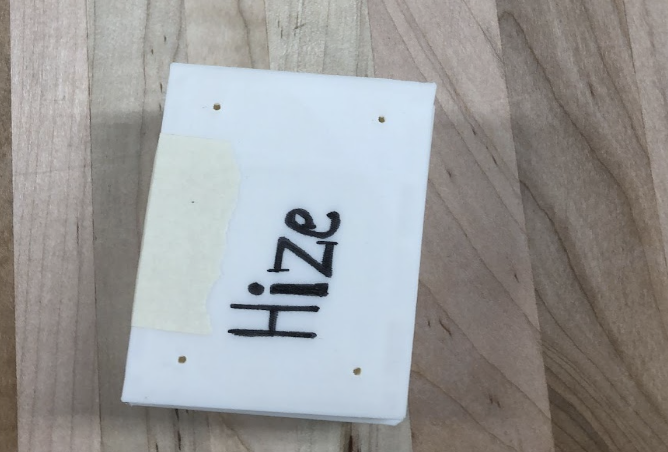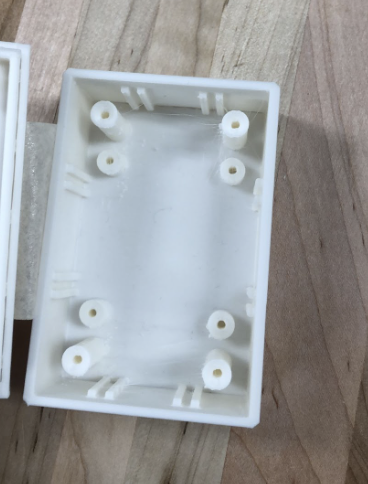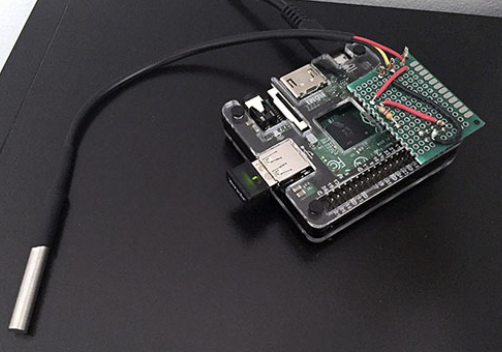Student:
Isha Patel ’25

ll Project Overview ll
I am in the process of building an IoT bee health monitoring device. The overall Hize project has three separate components; the wooden beehive, the IoT monitoring device, and an app interface or server to display the daily bee health data in a user-friendly manner. During the Community Project Studios class, I have and will continue to work on the IoT monitoring device, as well as the server display/app interface.
The IoT bee health monitoring device is the hardware/electrical component that will be able to measure the temperature inside the beehive, as well as visually monitor the bees through an ArduCam. While I hope to add more features to the hive monitor, temperature and visual data are the two most important in order to make the current design efficient and cost-effective. The electrical components are encompassed in a waterproof electrical box (which was also created during the Community Project Studios class), as they will be mounted on the outside of a beehive, so the electrical box will be protecting it from water and crazy weather.
The second component of the Hize system is the server. The server and operating systems for the Raspberry Pi Zero W (which I am using for the electrical component of this project) is needed to collect the data from the physical IoT device and collect it onto a database, as the IoT bee monitoring device will be sending temperature data and live footage access to the interior/exterior of the beehive every couple of hours.
Project Intent
Hize, the beehive health monitoring system, is a project I have been working on with another friend from India. As someone interested in environmental conservation, the drastically declining bee population and our lack of awareness about this problem as a society were of interest to me. The largest problem in this area was a constant uptick in honey demands and a constant decline in the number of bees and beehives. Therefore, our system, Hize, is created to encourage more efficient beekeeping in developing countries. By sending constant updates to beekeepers about the health of their hives remotely, they can expand their beekeeping practice and save their hives by being able to take necessary steps as soon as a health anomaly is detected by the Hize system. The Hize system, as an environmentalist, is my passion work to help the declining bee population problem.
ll Images of Project ll



ll Tool Usage ll
- Creality (3D Printer)
- AutoCAD
- Wire Cutters
- Raspberry Pi Zero Wireless
- SD Card (16 GB)
- Breadboards
- Jumper Wires
- ArduCam
- Temperature Sensors
- Laptop → Raspbian and PHP(myadmin)
The bullet points above are a comprehensive list of all the materials used to build the IoT device and set up the server (and what will be used in the next semester of Community Project Studios). The tools for the maker space that were used this semester were: the Creality 3D printer (along with its respective desktop used to design and import files), wiring, and wire cutters. The wiring was used to connect and set up the hardware portion of the IoT device. Since I had used my budget for this semester on my other materials, I used the wire cutter to ply off some of the rubber insulators on the ires and cut them to a size of my liking, turning them into jumper wires. The 3D printer, as well as the connected desktop, was used to design the electrical box that will house the IoT monitoring device hardware, as well as print out the box. Next semester, I will need to use many more materials such as the drill and the soldering iron.
ll Members ll
I am the only member of the “team”. Therefore, I work alone on the project and will be completing it this upcoming semester.
ll Work for Coming Semester ll
While I have most of the materials needed to complete the project, I was held up by some challenges with installing and navigating the operating system, Raspbian and setting up the server. Next semester (or perhaps over the summer), I plan to finish setting up the Apache server using PHP and PHPmyAdmin. Once the server-device setup is complete and the device can start receiving messages, I hope to complete the soldering and required on the Raspberry Pi Zero W and set the IoT hardware in the electrical box. It will then be ready to mount or “install” onto the physical wooden beehive. The remaining portions of the project should only take about four weeks to complete (in the next semester), as the main challenge has been and will be using PHP and PHPMyAdmin to create and set up the database, add server files, and other desktop files for the smooth transfer of data from the device to the server/desktop. I also help to automate an email sent every couple of hours with the temperature data of the various hives.